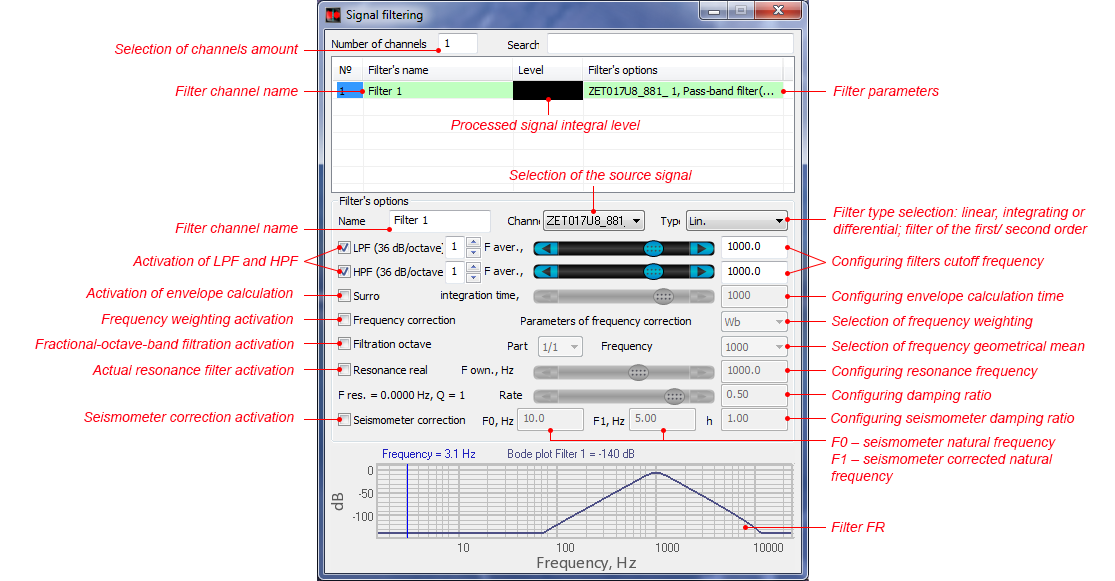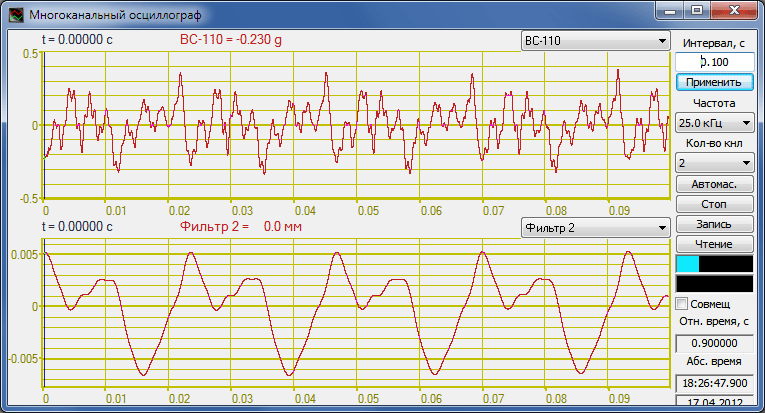Differentiation and integration of the signals are widely used for vibration and acoustics studies. Most of the transducers used in vibration studies are represented by piezoelectric accelerometers, i.e. the sensors produce a signal, that is proportional to the acceleration value. A lot of controlled vibrational parameters of various mechanisms are set depending on particular acceleration level. For balancing of the rotational mechanisms, it is necessary to know the value of vibration displacement at the point of vibration transducer mounting. In order to obtain vibration velocity signal from vibration acceleration value, it is necessary to obtain first-order integer value of the signal. To get the vibration displacement value, it is necessary to double-integer the vibration acceleration value. In a similar way, it is also possible to obtain displacement velocity and acceleration signal from the linear displacement sensor using the signal differentiation function.
Implementation of integrating filters allows to use the analyzer as a high-precision vibration meter.
Signal differentiation is also very useful for the purposes of various systems vibration and acoustic monitoring. Among the key monitoring parameters, one should mention the process trend, i.e. long-term change of the controlled signal level in the time domain (e.g., integral vibration level or noise level). To control the change of the signal, it is possible to perform differentiation of the signal and to control the level of its derivative, i.e. the signal change degree.
In the case, if the input signal is represented by vibration acceleration signal (i.e. the measuring unit is “g” or “m/s2”), then, upon integration of the signal, the measurement unit for the output channel value will be vibration displacement – “m”. In the case of double integration of vibration acceleration signal the measuring unit of the output channel value will be vibration displacement – “m”. If the reference value “dB” of the input channel has been selected based on the ISO system requirements, then the ISO instructions should also be used for the output channels reference values of both integer and double integer functions. If the dB reference values have been selected based on GOST requirements, then the output channels reference values should be also assigned based on GOST system. Otherwise, it is necessary to add to the input channel measurement unit: “*c” for integer, “*c2” for double integer, “/c” for differentiation, “/c2” for double differentiation. In this case, the calculation reference value “dB” is not to be changed.
The Linear filter does not perform any operations.



